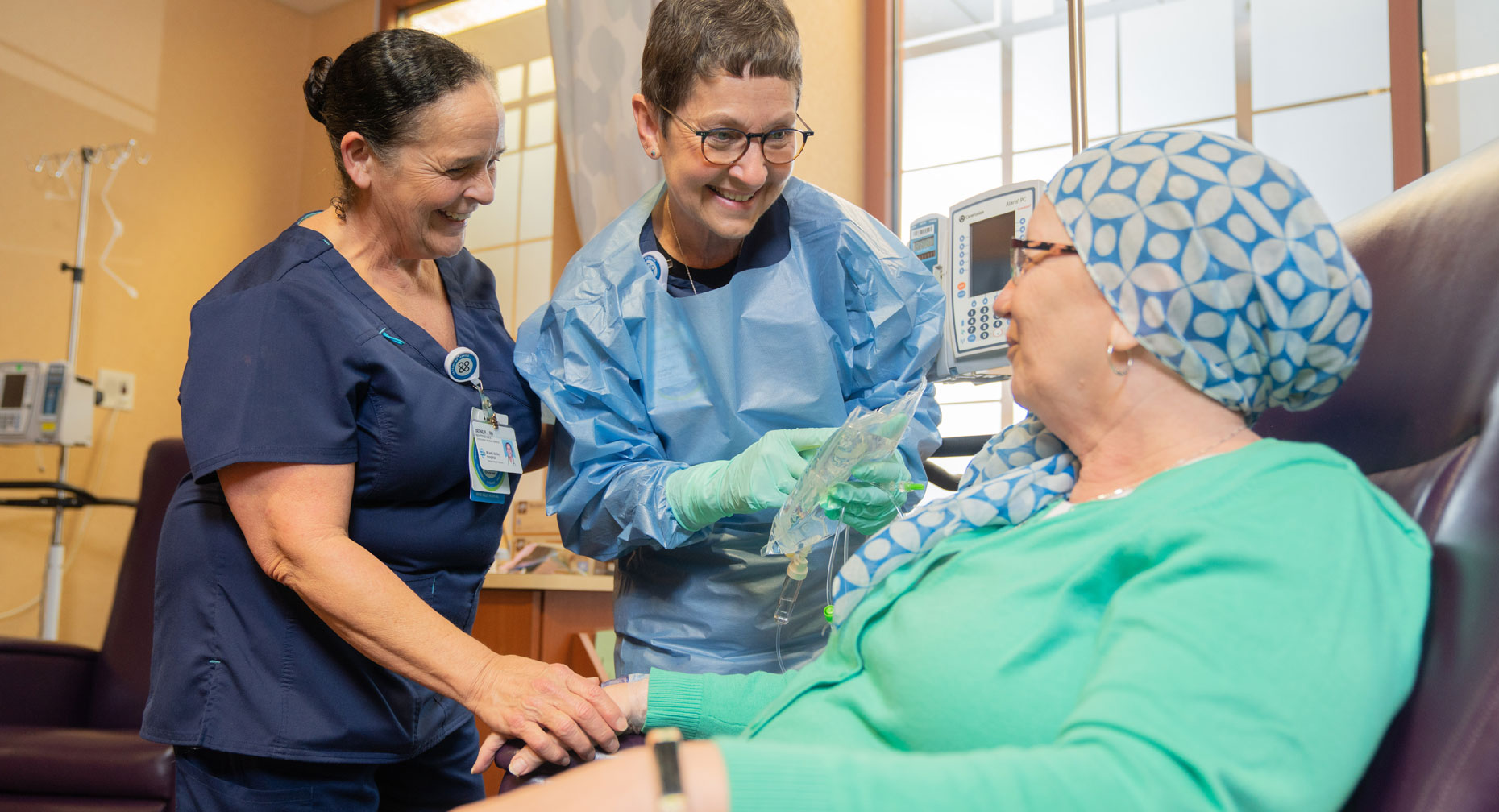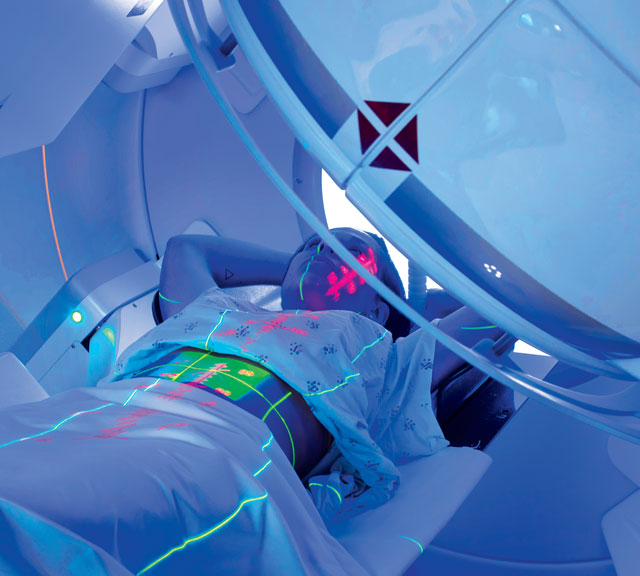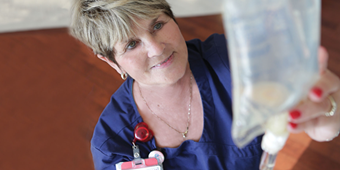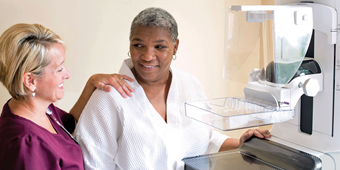It’s In the Blood: Understanding Leukemia

Answer a few questions and we'll provide you with a list of primary care providers that best fit your needs.
Leukemia is a type of cancer that starts in your blood cells, especially the white blood cells that fight infection in your body. The cells grow and divide abnormally and don’t function well. The disease affects both children and adults, but it’s 10 times more common in adults.
Types of leukemia are grouped according to the kinds of cells that are growing abnormally and how fast or slowly they grow. Chronic leukemia develops slowly and symptoms may not show up for some time. Acute leukemia tends to develop quickly, with leukemia cells producing rapidly. Leukemia most commonly affects the lymphoid cells or myeloid cells made in your bone marrow.
Due to better understanding and treatment of the disease, the odds of living five years and more beyond cancer diagnosis have increased dramatically over the past 50 years.
Common Types Of Leukemia
You may know the most common types of leukemia by their abbreviations or full names. The chances of living beyond five years with each of the cancer types is provided below by the Leukemia and Lymphoma Society.
Acute Lymphocytic (Lymphoblastic) Leukemia (ALL) generally grows quickly and affects the lymphoid cells. It’s the most common leukemia in children but can also affect adults. The five-year survival rates are 71 percent across all ages, 91.8 percent in children and adolescents younger than 15 years, and 94 percent in children under age 5.
Acute Myeloid Leukemia (AML) occurs in both children and adults, affecting myeloid cells and growing quickly. Five-year survival rates are 66.4 percent for children younger than 15 years and 27.4 percent overall.
Chronic Lymphocytic Leukemia (CLL) grows slowly and affects the lymphoid cells. It occurs most often in people over age 55. Children rarely get this type of leukemia. The odds of living more than five years past diagnosis are 86.2 percent.
Chronic Myeloid Leukemia (CML), which mainly affects adults, causes myeloid cells to grow abnormally and quickly. It accounts for only 10 percent of all leukemias. The five-year survival rate is 68 percent.
Due to better understanding and treatment of the disease, the odds of living five years and more beyond cancer diagnosis have increased dramatically over the past 50 years.
Are You At Risk?

More than 60,000 Americans are expected to be diagnosed with leukemia each year. Exposure to smoking, high levels of radiation, chemicals such as benzene, and chemotherapy can put you at greater risk for developing leukemia. Genetic disorders such as Down syndrome and neurofibromatosis also increase your odds of getting leukemia.
Symptoms of both chronic and acute leukemia include:
- Swollen lymph nodes
- Feeling weak or tired
- Getting infections or illnesses frequently
- Bleeding easily
- Pain in your bones or joints
- Fever or night sweats
- Swollen lymph nodes
- Unexplained weight loss
- Abdominal swelling or discomfort
- Patches of purple or tiny red spots under your skin
Diagnosing And Treating Leukemia
If you or a family member has one or more of the above symptoms, see a physician.
A physical exam can detect swelling in the lymph nodes, spleen, or liver. Your doctor also can examine skin discoloration. A blood test is important, since leukemia causes high levels of white blood cells and sometimes low levels of platelets (blood cells that help with clotting) or hemoglobin found in red blood cells. Other tests include a chest X-ray to look for swollen lymph nodes or other abnormalities, a bone marrow biopsy, genetic testing, or a spinal tap to look for leukemia cells in cerebrospinal fluid.
Treatment varies depending on the type of leukemia you have and your overall health. The main treatment options for leukemia include:
- Watchful waiting, which allows your doctor to delay treatment of slow-growing CLL if you don’t have symptoms. Your doctor will carefully and frequently check you for signs that CLL is becoming more active.
- Chemotherapy, which uses powerful drugs that kill fast-growing cancer cells but also harm normal, healthy cells.
- Targeted therapy, which uses drugs that block the growth of leukemia cells if you have CML or ALL. These therapies treat the cancer cells and cause less harm to normal cells.
- Immunotherapy, which builds up the body's own immune system to help fight cancer. A substance such as a monoclonal antibody binds to leukemia cells and kills them or helps the immune system destroy them.
- Radiation therapy, which uses high-energy rays to kill leukemia cells. Radiation can be directed to specific parts of the body or given across the entire body.
- A stem cell transplant which first uses high doses of drugs, radiation or both to destroy cancerous and normal cells in the bone marrow. Then, healthy stem cells are injected into your vein to replace the destroyed cells.
Medications can effectively treat side effects of these treatments, including nausea, diarrhea, constipation, and mouth sores. Newer, targeted therapies tend to cause fewer side effects.
Answer a few questions and we'll provide you with a list of primary care providers that best fit your needs.
Source: American Cancer Society; Leukemia and Lymphoma Society, Cancer Support Community




